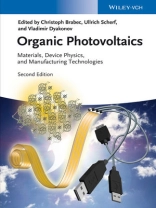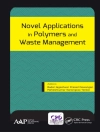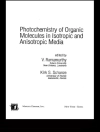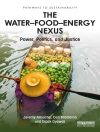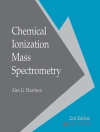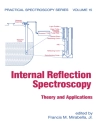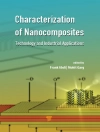The versatility of organic photovoltaics is already well known and this completely revised, updated, and enlarged edition of a classic provides an up-to-date overview of this hot topic.
The proven structure of the successful first edition, divided into the three key aspects of successful device design: materials, device physics, and manufacturing technologies, has been retained. Important aspects such as printing technologies, substrates, and electrode systems are covered. The result is a balanced, comprehensive text on the fundamentals as well as the latest results in the area that will set R&D trends for years to come.
With its combination of both academic and commercial technological views, this is an optimal source of information for scientists, engineers, and graduate students already actively working in this field, and looking for comprehensive summaries on specific topics.
Содержание
PART I: Materials for Thin Film Organic Photovoltaics
OVERVIEW OF POLYMER AND COPOLYMER MATERIALS FOR ORGANIC PHOTOVOLTAICS
Introduction
Early Efforts
Toward Devices with 5% Efficiencies
Novel Thiopene-Containing Polymers
Fluorene-Containing Molecules
Carbazole-Based Copolymers
New Heterocyclic Polymers
Polymers Based on Other Types of Building Blocks
Conclusions
THIOPHENE-BASED HIGH-PERFORMANCE DONOR POLYMERS FOR ORGANIC SOLAR CELLS
Introduction
Bandgap Engineering
Charge Generation in Bulk Heterojunction Organic Solar Cells
Polyalkylthiophenes
Polyalkylthiophene/PCBM Blends
Polythiophene Copolymers
Side Chain Functionalized P3AT Derivatives
Third-Generation Polythiophenes
Thiophene-Based Push?Pull Copolymers
Benzo[1, 2-b:4, 5-b’]dithiophene-Based Polymers
Cyclopental[2, 1-b:3, 4-b’]dithiophene-Based Polymers
Indacenodithiophene-Based Polymers
Conclusion and Outlook
MOLECULAR DESIGN OF CONJUGATED POLYMERS FOR HIGH-EFFICIENCY SOLAR CELLS
Introduction
Structural Features of Conjugated Polymers
‘D-A’ Approach
Quinoid Approach
Summary and Outlook
SOLUTION-PROCESSED MOLECULAR BULK HETEROJUNCTION SOLAR CELLS
Introduction
Monochromophoric Molecules
Multichromophoric Molecules
Summary and Future Directions
VACUUM-PROCESSED DONOR MATERIALS FOR ORGANIC PHOTOVOLTAICS
Introduction
Planar and Bulk Heterojunction Solar Cells
Summary and Future Prospects
POLYMER-NANOCRYSTAL HYBRID SOLAR CELLS
Introduction
Semiconductor Nanocrystals
Working Principles and Device Structure
Evolution of Polymer-NC Hybrid Solar Cells
Recent Approaches for Overcoming Current Limitations
Novel Concepts and Perspectives
Summary and Outlook
FULLEREN-BASED ACCEPTOR MATERIALS
Introduction and Overview
Fullerenes as n-Type Semiconductors
Fullerene Derivatives
Derivatives of C70 and C84
Fullerene Bisadducts
Endohedral Compounds
Commercialization of Fullerene Derivatives
POLYMERIC ACCEPTOR SEMICONDUCTORS FOR ORGANIC SOLAR CELLS
Introduction
Basics Principles and Operation for Organic Solar Cells
Polymeric Acceptor Semiconductors
Conclusions and Perspective
WATER/ALCOHOL-SOLUBLE CONJUGATED POLYMER-BASED INTERLAYERS FOR POLYMER SOLAR CELLS
Introduction
The Development of Water/Alcohol-Soluble Conjugated Polymers as Interlayer Materials
Interface Engineering for Polymer Solar Cells
Discussion of the Working Mechanism
Summary
METAL OXIDE INTERLAYERS FOR POLYMER SOLAR CELLS
Introduction
Conventional Structure
Inverted Structure
Tandem Structure
Additional Oxides (Cr2O3, Cu Ox, Pb O)
Conclusions
PART II: Device Physics of Thin Film Organic Photovoltaics
BIMOLECULAR AND TRAP-ASSISTED RECOMBINATION IN ORGANIC BULK HETEROJUNCTION SOLAR CELLS
Introduction
Recombination at Open Circuit
Trap-Assisted Recombination at Open Circuit
Investigation of the Nature Recombination by Electroluminescence Measurements
Bimolecular Recombination Strength in Organic BHJ Solar Cells
Bimolecular Recombination Losses Under Short-Circuit Conditions
Effect of Bimolecular Recombination on Fill Factor and Efficiency
Conclusions
ORGANIC PHOTOVOLTAIC MORPHOLOGY
Introduction
Order in Bulk Heterojunctions
Nanoscale Morphology in Bulk Heterojunctions
Phases in a Bulk Heterojunction
Structure of the Interface between Phases
In Situ Measurements of Morphology Development
INTERCALATION IN POLYMER:FULLERENE BLENDS
Introduction
Methods for Detecting Molecular Mixing
Factors Affecting Molecular Mixing
The Effect of Molecular Mixing on Electronic Properties and Solar Cells
Conclusions
ORGANIC TANDEM SOLAR CELLS
Introduction and Working Principle
Measurement Techniques
Efficient Intermediate Charge Carrier Recombination
Light Management
Choice of Materials
Parallel Tandem Architectures
New Tandem Solar Cell Concepts
Conclusions
SOLID-STATE DYE-SENSITIZED SOLAR CELLS
Introduction
Working Principles of Solid-State Dye-Sensitized Solar Cells
Loss Mechanims in Solid-State Dye-Sensitized Solar Cells
Solid-State Dye-Sensitized Solar Cells with Spiro-OMe TAD as Hole Conductor
Hybrid Solar Cells with Absorbing Hole Conductors
Ordered Nanostructures for Solid-State Dye-Sensitized Solar Cells
Summary and Outlook
PART III: Technology for Thin Film Organic PV
REEL-TO-REEL PROCESSING OF HIGHLY CONDUCTIVE METAL OXIDES
Introduction
Materials
Deposition Technology
Equipment
Alternative Approaches
FLEXIBLE SUBSTRATE REQUIREMENTS FOR ORGANIC PHOTOVOLTAICS
Introduction
Polyester Substrates
Properties of Base Substrates
Concluding Remarks
ADHESIVES FOR ORGANIC PHOTOVOLTAIC PACKAGING
Introduction
Encapsulation Process for Organic Photovoltaics
Chemistry Aspects of Barier Adhesives
Barrier Performance of OPV Adhesives
Conclusions
ROLL-TO-ROLL PROCESSING OF POLYMER SOLAR CELLS
Introduction
The Roll-to-Roll Process
Structure of Modules
Coating and Printing Techniques for PSC Materials
Roll-tol-Roll Printing of Electrodes
R2R Encapsulation
Roll-to-Roll Characterization
Future and Outlook
CURRENT AND FUTURE DIRECTIONS IN ORGANIC PHOTOVOLTAICS
Scientific and Technological Aspects
Commercial Applications
Challenges and Major Hurdles
Index
Об авторе
Christoph J. Brabec is full professor at the University of Erlangen-Nurnberg, Germany heading the chair i-MEET ‘materials for electronics and energy technology’ at the department of material science. After completing his Ph D in 1995, he joined the group of Prof. Alan Heeger at the University of Santa Barbara, USA, for a sabbatical in 1996, and continued to work on the opto-electronic properties of organic semiconductors as assistant professor at the University of Linz with Prof. Serdar Sariciftci. In 1998, he became senior scientist at the Christian Doppler Laboratory working on organic solar cells, which he left in 2001 to join Siemens Corporate Technology as project leader for organic semiconductor devices. From 2004 on he became headed the printed photovoltaics programme at Konarka Technologies as director and later on as CTO, before he joined Erlangen university in 2009. He finished his habilitation in physical chemistry at the Johannes Kepler University of Linz in 2003, and is author or co-author of more than 250 papers and inventor or co-inventor of over 100 patents. He is co-chair of the editorial board of the Wiley-VCH journal ‘Advanced Energy Materials’.
Ullrich Scherf is full professor for Macromolecular Chemistry at Bergische Universitat Wuppertal, Germany, and director of the interdisciplinary research cluster ‘Institute for Polymer Technology’. He studied chemistry at Friedrich-Schiller-Universitat Jena, Germany, obtaining his Ph D in 1988 and subsequently spent one postdoctoral year with Heinz Penzlin, Saxonian Academy of Sciences, Jena. He joined the Klaus Mullen group at Max Planck Institute for Polymer Research in Mainz in 1990 and completed his habilitation in 1996 on polyarylenetype ladder polymers. Ullrich Scherf was Professor for Polymer Chemistry at Potsdam University (2000-02) and, since 2002, Professor for Macromolecular Chemistry at Wuppertal University. He has authored or co-authored more than 500 refereed journal papers.
Vladimir Dyakonov is full professor of experimental physics at the University of Wurzburg, Germany, and scientific director of the Bavarian Centre of Applied Energy Research (ZAE Bayern) in Wurzburg. He obtained his diploma degree in physics from the University of Saint Petersburg, Russia his Ph D from the A. F. Ioffe-Institute in Russia and his habilitation degree from the University of Oldenburg, Germany, in 1986, 1996 and 2001, respectively. From 1996 to 1998, he worked as a post-doctoral fellow at the universities of Antwerp, Belgium, and Linz, Austria.
